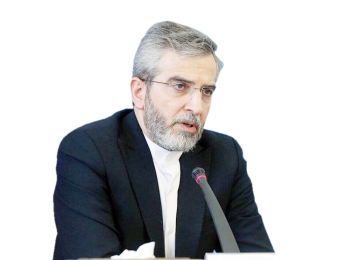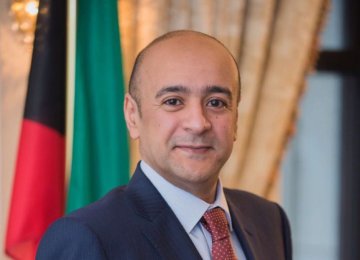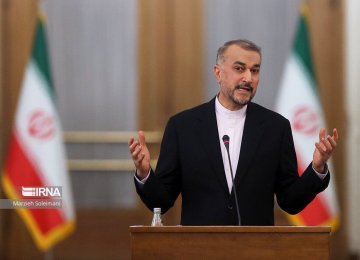Agreements reached between Iran and the International Atomic Energy Agency during the director general’s recent visit are completely in line with the parliamentary law, known as the strategic action plan to lift sanctions and protect the interests of the Iranian nation, a senior nuclear official said.
“The agreements are in no contradiction with the Majlis strategic law,” Behrouz Kamalvandi, spokesman for the Atomic Energy Organization of Iran, said in an interview with IRNA.
The Iranian parliament passed a law in December 2020 that urged the government to suspend any cooperation with the IAEA beyond the requirements of the nuclear Non-Proliferation Treaty’s comprehensive safeguards agreement until all parties to the 2015 nuclear deal return to their commitments.
Iran had agreed to further restrict its nuclear activity and allow stricter IAEA monitoring in return for sanctions relief under the 2015 deal, known as the Joint Comprehensive Plan of Action.
The United States, however, withdrew from the deal in 2018 and reimposed tough sanctions, prompting Tehran to take reciprocal action, including restrictions to the agency’s monitoring.
IAEA chief Rafael Grossi made a two-day trip to Tehran and met President Ebrahim Raisi and other top officials over Friday and Saturday to discuss ambiguities over the country’s nuclear activities.
That included the agency’s report about the detection of uranium particles enriched to nearly 84% at Iran’s underground Fordow nuclear site.
The two sides were also set to discuss the outstanding safeguards issues related to traces of uranium that the agency claims have been found at three old undeclared sites in Iran.
Tehran denies the accusation, but has allowed access to the locations and provided answers to the agency which the director general has dismissed as uncredible.
Iran’s nuclear body and the international agency issued a statement following the discussions in Tehran, saying they agreed to carry out interactions based on the comprehensive safeguards agreement.
“Iran expressed its readiness to continue its cooperation and provide further information and access to address the outstanding safeguards issues” related to the three locations, the statement read.
??On a voluntary basis, Iran will also allow the IAEA to implement further appropriate verification and monitoring activities, the modalities of which will be agreed between the two sides in the course of a technical meeting set to take place soon in Tehran, according to the text.
The statement did not provide any further details.
Joint Agenda
Grossi said at a press briefing upon his return to Vienna that Iran has agreed to provide access to information, locations and people, as well as reinstallation of surveillance cameras and other monitoring equipment.
Iran’s Nour News, close to the Supreme National Security Council, however, said the most important outcome of Grossi’s visit was a joint agenda for expediting safeguards-related cooperation within the framework of Iran’s obligations and the agency’s competences, and while the law of strategic action is observed.
“News on providing access to individuals and three locations, or installation of new cameras are false,” it said in a tweet.
Kamalvandi also denied any promise by Iran for access to people.
“During the two days that Mr. Grossi was in Iran, the issue of access to individuals was never raised and no text has written in this regard either,” he said, adding Iran would have rejected such a request.
He also said there were no discussions or agreement on the installation of cameras.
Iran removed a number of IAEA surveillance cameras from its nuclear sites in June 2022 in response to a Board of Governors’ resolution against the country.
Grossi also told reporters that the Iranians had agreed to boost inspections at the Fordow facility, where the highly enriched particles were found, by 50%.
According to Kamalvandi, inspections at Fordow had to increase based on the safeguards regulations, since it was enriching up to 60% for the first time.
“There were previously eight cases of inspection which has risen to 11 given the higher level of enrichment,” he said, without mentioning the time span.
Iran has been enriching uranium to up to 60% purity since April 2021, above the 3.67% cap imposed by the JCPOA as part of its countermeasures.
It argues that unintended fluctuations in enrichment levels, such as the particles at nearly 84% purity, are normal during the process, and what should be assessed is the end product.
In his press conference, Grossi also confirmed the agency’s findings that there has not been any “production or accumulation” of uranium at the higher enrichment level in Fordow.
Referring to agreements on the agency’s access to the three disputed locations, the AEOI spokesman said there were no discussions about unlimited access to the sites in question.
“Considering previous accesses to the locations, there is basically no need for further access and the agency has not made such a request,” he said.









Add new comment
Read our comment policy before posting your viewpoints